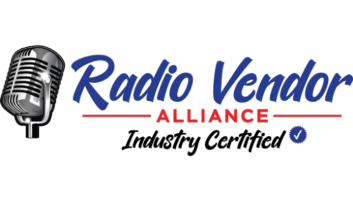A Quiet Battle Is Raging Over Consumers’ Usage Rights for Digital Radio Content
In our last installment, we dipped out toes into the very deep pool of content protection technology, in the context of possible music downloads via satellite radio. This time we’ll look further at the technology, and see how it might be applied, for better or worse, to digital terrestrial radio broadcasting.
CA vs. DRM
Traditional broadcast-style content protection has used some form of encryption to block unauthorized users from hearing or viewing media. This is generally called conditional access, or CA, and a small handful of companies around the world dominate its technology. CA systems scramble content as it is broadcast, and (in theory) only authorized receivers can descramble it as it is received. A variety of techniques and algorithms are used, optimized for a proper balance of robustness versus bandwidth efficiency.
Some form of CA is used by most digital media subscription services today, such as satellite radio and TV systems, where consumption is generally done in real time. Recent extensions to some CA systems allow time-shifting, however, thus enabling DVRs to record premium content from satellite TV channels, for example.
If protection is desired for a specific item of content, rather than the securing of a particular delivery channel, a different type of content protection called digital rights management (DRM) is more appropriate. (Note that this acronym should not be confused with the one for Digital Radio Mondiale, the digital broadcasting system intended primarily for LW/MW/SW/AM frequencies.)
Rather than simply allowing or disallowing access to content on a given delivery channel, DRM is a form of secure metadata that is bound to a particular piece of content (such as a song or a discrete radio program), which can allow or disallow usage of the content in a highly granular fashion.
For example, DRM applied to a song can allow it to be played on a given device only once; or, it could be played infinitely on that device, but not copied to another device or to removable media; or it could be played infinitely for one week, and then become unplayable; or it could be played in low-resolution form for free, but in higher resolution for a fee; and so on. Thus DRM can enable numerous business models encompassing content rentals, purchases, pay-per-view/listen, downloads, subscriptions and more, each with specifically crafted usage rights attached.
In the clear
Both CA and DRM rely on relatively strong encryption to enforce their protection of digital media content. This works well in the context of a “private” distribution environment (like satellite or cable, or even a subscription terrestrial broadcast channel), but obviously it cannot be intrinsically applied to normal, free-to-air broadcasts, where content by definition must remain “in the clear” or unencrypted. This conundrum has been encountered in recent years by content owners and broadcasters who wish to offer unencrypted broadcasts that still put boundaries over the subsequent usage of received content by audiences.
Specifically, the movie and television production community has been concerned that digital TV broadcasts of high-value content (e.g., first-run episodic series, sports or movies) might be recorded in high resolution by viewers and then e-mailed or posted to the Internet for indiscriminate mass redistribution, similar to what has happened to music ripped from CDs then distributed via peer-to-peer networks.
So the U.S. DTV industry developed the concept of the “Broadcast Flag,” which allows content to be broadcast unencrypted, but marked for protection after reception by the addition of encryption at the receiver. By rule, all downstream equipment would observe a protocol that allowed decryption of the content only under certain fair-use style conditions, but disallowed Internet redistribution.
The FCC developed rules to this effect, and established a procedure by which it would approve the content protection technologies that could be used by consumer equipment to enforce the regime. The scheme was scheduled to go into effect on July 1, 2005, after which all consumer DTV equipment sold would have to observe the Broadcast Flag rules.
In May 2005, however, a court ruled that the FCC had overstepped its jurisdiction in enacting these rules, and vacated them. The court held that absent specific authorization by the Congress to do so (which had not happened, in the court’s opinion), the FCC could not set rules for what consumers can do with broadcast content after it is received. In other words, the FCC’s domain extends between transmit and receive antennas, and not beyond – unless Congress tells it to go there.
This meant that several years of effort in developing the Broadcast Flag compromise solution was for naught, and although some equipment observing the Flag provisions had already made it to store shelves, the full ecosystem required for it to work – from broadcast encoding to consumer display – was not put into effect as scheduled last summer.
Since that time, the TV and cinematic content industries, primarily represented by MPAA, have been trying to salvage the Broadcast Flag by pushing every possible congressional button to get the FCC the explicit authority it requires to reinstate the rules. At this writing it had not yet been successful, but the effort was still ongoing.
RIAA jumps in
The FCC’s Broadcast Flag rules were specifically limited to digital TV broadcasting. Once the rules were overturned, however, the subsequent effort to obtain congressional authorization of the FCC in this area attracted the record industry’s interest.
Seizing the opportunity to have any grant of FCC authority for enforcement of content protection also apply to digital radio broadcasts of copyrighted music, the recording industry is now deeply engaged in the fray. So now, both the MPAA and the RIAA are roaming the halls of Congress attempting to garner support for relatively broad powers to be bestowed on the FCC in this regard.
Observers have noted some important differences between the DTV Broadcast Flag and any radio equivalent. These differences ultimately may cause Congress to treat the two digital broadcast media separately in any grant of FCC authority on the matter. Meanwhile the RIAA has hinted that rather than the Broadcast Flag approach, it may want all digital radio broadcasts to be encrypted prior to transmission, using one of the technologies described above.
These elements significantly up the ante on the discussion, particularly as they apply to the IBOC transition and its nascent deployment. We’ll consider these effects, and the differences between content protection for digital radio vs. DTV, in the next issue.












